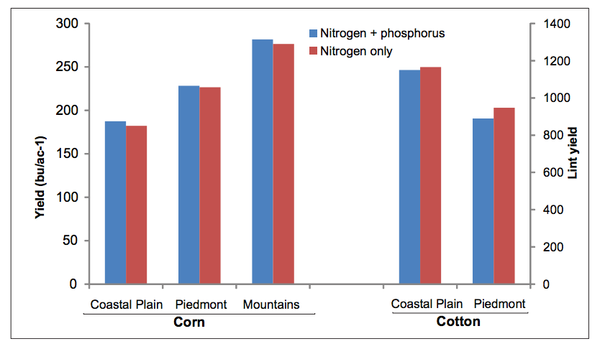
Recovering From the Storm: Resources for Woodland and Forest Landowners
Hurricanes can cause significant damage to forest and timber land through wind and flooding. The first priority is to …



El inglés es el idioma de control de esta página. En la medida en que haya algún conflicto entre la traducción al inglés y la traducción, el inglés prevalece.
Al hacer clic en el enlace de traducción se activa un servicio de traducción gratuito para convertir la página al español. Al igual que con cualquier traducción por Internet, la conversión no es sensible al contexto y puede que no traduzca el texto en su significado original. NC State Extension no garantiza la exactitud del texto traducido. Por favor, tenga en cuenta que algunas aplicaciones y/o servicios pueden no funcionar como se espera cuando se traducen.
Inglês é o idioma de controle desta página. Na medida que haja algum conflito entre o texto original em Inglês e a tradução, o Inglês prevalece.
Ao clicar no link de tradução, um serviço gratuito de tradução será ativado para converter a página para o Português. Como em qualquer tradução pela internet, a conversão não é sensivel ao contexto e pode não ocorrer a tradução para o significado orginal. O serviço de Extensão da Carolina do Norte (NC State Extension) não garante a exatidão do texto traduzido. Por favor, observe que algumas funções ou serviços podem não funcionar como esperado após a tradução.
English is the controlling language of this page. To the extent there is any conflict between the English text and the translation, English controls.
Clicking on the translation link activates a free translation service to convert the page to Spanish. As with any Internet translation, the conversion is not context-sensitive and may not translate the text to its original meaning. NC State Extension does not guarantee the accuracy of the translated text. Please note that some applications and/or services may not function as expected when translated.
Collapse ▲
Hurricanes can cause significant damage to forest and timber land through wind and flooding. The first priority is to …
Tropical storms and hurricanes are unfortunate events that are sometimes experienced by people living in North Carolina. Informed decisions …

We are excited to launch the first iteration of BeanPACK, SoyBEAN Planting Analytics and Customized Knowledge, on October 1. …

I call the first week of September looper week, and this year has not disappointed. Soybean loopers cannot overwinter …

Everything you need to know to successfully grow vegetables in the Southeast including: varieties, planting dates, fertilizer recommendations, cover …

All soybean producers are invited to a hands-on field day on indeterminate versus determinate growth habits of soybean. Dr. …
August 23rd, 2024- In the wake of Tropical Storm Debby, many individuals throughout the tobacco supply chain have asked what …

(Adapted from: US Wheat & Barley Scab Initiative) It’s time to start preparing for winter small-grain planting. Here are some …
The 2024 growing season continues to present challenges, this time in the form of Hurricane/Tropical Storm Debby. This is a …

For many years, corn earworm has been the top pest in North Carolina soybeans in terms of cost of …

We have developed a brief survey to better understand barriers producers in North Carolina and South Carolina face in …

The following information is from the USDA-FSA 2024 Organic Certification Cost Share Program (OCCSP) Announcement USDA certified organic growers are …

While the majority of sunflowers in the U.S. are grown further north, in North Carolina sunflower has potential to …

May 18th Transplanting progress has significantly slowed over the past two weeks due to heavy rainfall. Since May 1st, tobacco …

Across the state we have seen some pale patches in wheat fields. This article describes some of the more …

[The short article is a reposting of Branan’s recent submission to Southern Agriculture Today] The emerging conflict between utility-scale solar …

Stripe rust has appeared in eastern North Carolina. It was found April 17th in field plots of DG Shirley …

The Southeast Transition to Organic Partnership Program(SE TOPP) is a new USDA program that NC State is participating in to …

Beans Gone Wild is an interactive online tool that catalogs arising soybean issues across North Carolina annually. The issues …

We have been targeting a public release of our dynamic soybean grower decision support tool which would allow producers …

This factsheet for farmers describes concepts, terminology, and guidelines concerning soil sampling. Proper testing allows …

Nitrogen fertilizer products are being developed and marketed as having the potential to increase yields and …

Phosphorus (P) is the second most important nutrient in crop production but is often found …

This factsheet describes the symptoms of a shoot inhibitor herbicide injury.

This factsheet describes the symptoms of a metribuzin herbicide injury.

This factsheet describes the symptoms of a dichlobenil herbicide injury.

This factsheet describes the symptoms of a protoporphyrinogen oxidase inhibitor herbicide injury.
This factsheet summarizes the symptoms and management of stubby-root nematodes in soybean in North Carolina.